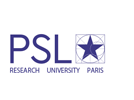Abstract
Following his move to Paris at the end of 1933, Wassily Kandinsky clung to his conviction that art must remain free of politics. The purpose of this essay is to consider both the limitations and advantages of this position in the polarized political climate of the French capital and to chart the aesthetic path he embarked on after his arrival, with particular reference to the personal ties and artistic alliances that he forged (or not) in this complex cultural terrain. Far from having nothing to do with politics, the transformation his painting underwent in Paris, the period he dubbed “synthetic,” was the result of both the maturation of his ideas on abstract art and his adaptation to a rocky political and cultural landscape.
Recommended Citation
Kangaslahti, Kate C.. "Nothing to Do with Politics, Only Art? On Wassily Kandinsky's Work in Paris, from 1934 until the Outbreak of the War." Artl@s Bulletin 6, no. 2 (2017): Article 5.






